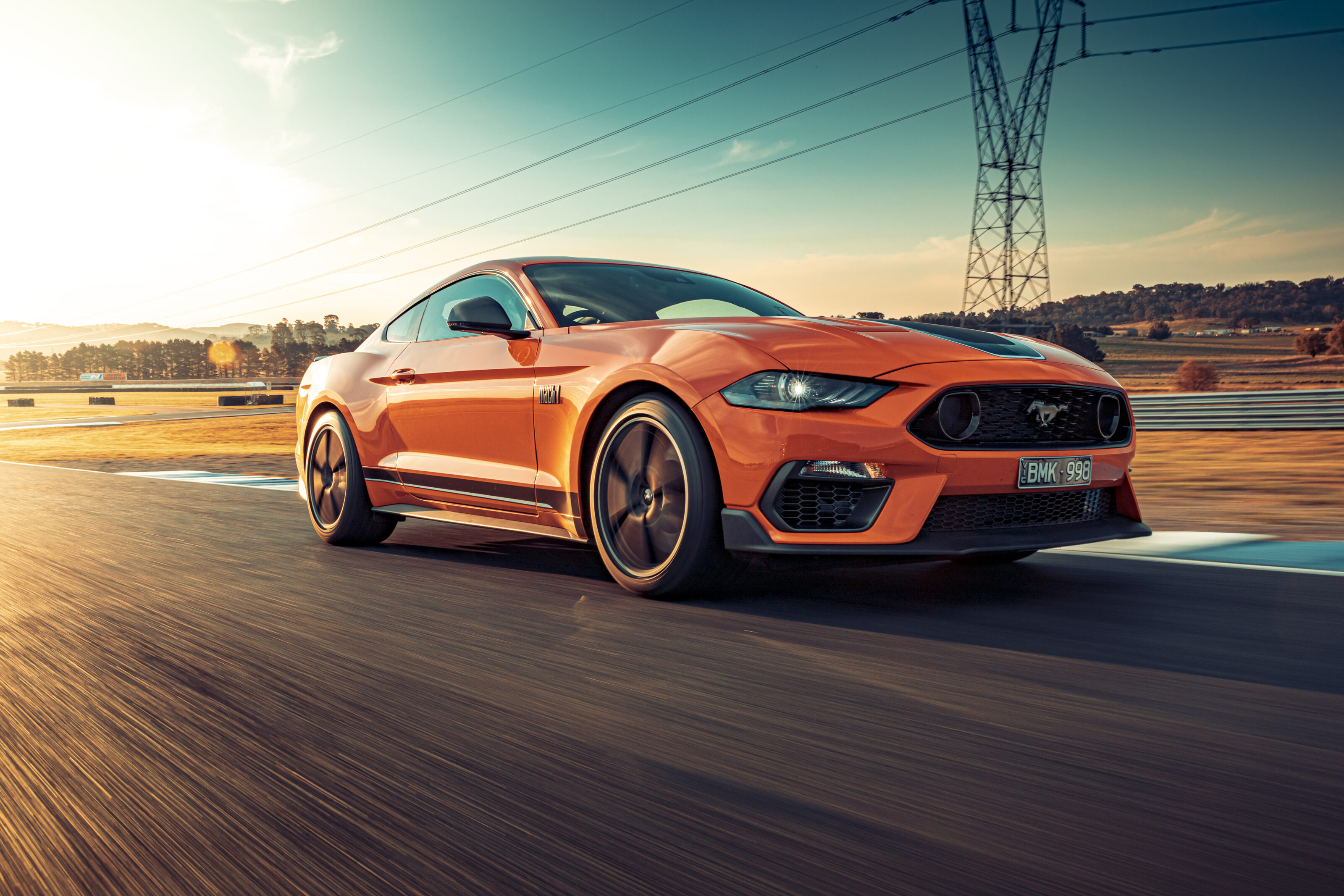Things we like
- worthwhile performance upgrades
- looks and sounds special
- works on track
Not so much
- no adaptive cruise
- taller diff
- tiny power bump
This is judgement day. The Ford Mustang Mach 1 is the Blue Oval’s chance at redemption for Shelby-deprived Aussie Mustang enthusiasts.
A quick history lesson. The FM Mustang, released in 2015, was very capable on road and track (though the six-speed auto was a bit dim-witted) so when the FN was released in 2018 we rubbed our hands together in glee.
More power, an upgraded manual and new 10-speed automatic, MagneRide adaptive dampers, Racetrack and Drag Strip modes and Michelin Pilot Sport 4 S tyres all suggested more of a good thing, but the reality didn’t quite live up to the promise.
On road all was well, the new Mustang, especially in auto guise, is quicker, more refined and more comfortable, but for those who wish to stretch their pony’s legs on track there are problems.

The automatic can barely last a lap at full noise and while the manual has slightly more stamina (as in two laps, maybe three) the gearing of the new Getrag ’box is so long that you’ll barely get into fourth gear at most tracks, second gear stretching to 133km/h and third 197km/h.
This dulls the punch of the engine to such a degree that on the drag strip the FN manual is actually slightly slower than its less powerful predecessor.
In the US the obvious response to this is: “If you want a track Mustang, buy a Shelby” but with Ford’s hi-po ’Stangs limited to left-hand drive only Aussies have been out of luck. Until now.
Ford has revived a famous nameplate to fill the gap between the standard GT and flagship Shelbys. Mach 1 has been synonymous with sportier, more focused Mustangs since it was first revealed in 1969 but it’s been 17 years since the badge appeared.
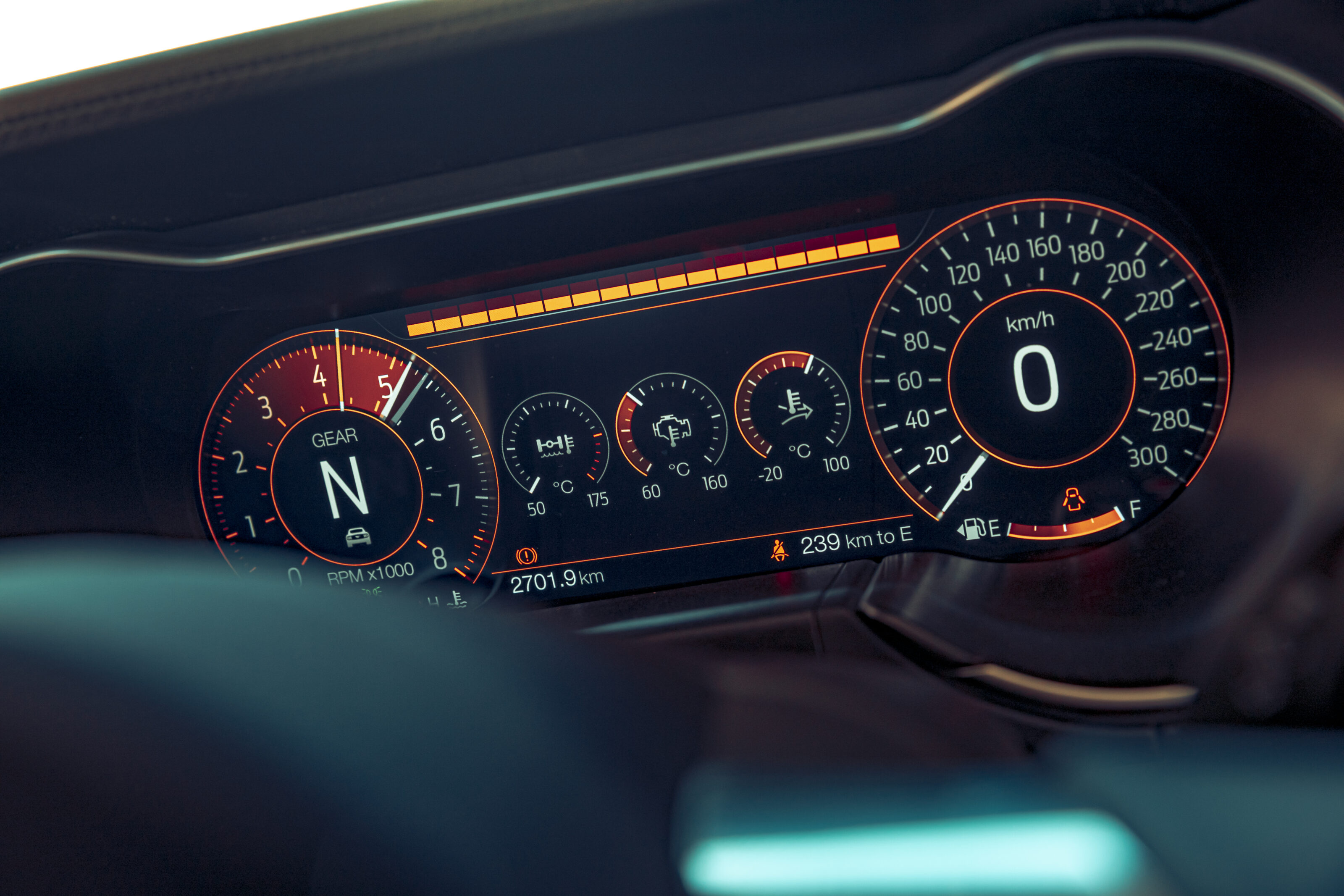
This ain’t no stripes ’n’ stickers pack, though the decals that adorn the bonnet and sides, along with the Magnum-style wheels, new grille and rear diffuser with 4.5-inch tailpipes certainly do the Mach 1’s street cred no harm.
Five colours are available: black or white with a black/red stripe combo, blue or orange with a black/white stripe or Fighter Jet Grey with black/orange stripes. An extra $1000 adds the Appearance Pack, only available with the grey, that adds orange setback accents and orange brake calipers.
There’s a smattering of Mach 1 badges outside and in, the dash badge accompanied by the chassis number. Standard equipment levels are as per the GT, including heated and cooled seats (or the optional Recaros for $3000) a 12-speaker B&O sound system, Ford Sync3 infotainment, eight airbags, lane keep assist and AEB, but adaptive cruise control has fallen by the wayside.
It’s in the mechanicals, though, that things get really juicy. The induction system, intake manifold and 87mm throttle bodies from the Shelby GT350 give the 5.0-litre V8 a 6kW tickle to 345kW and 556Nm; the Shelby also donates its oil cooler which increases cooling capability by 50 per cent.
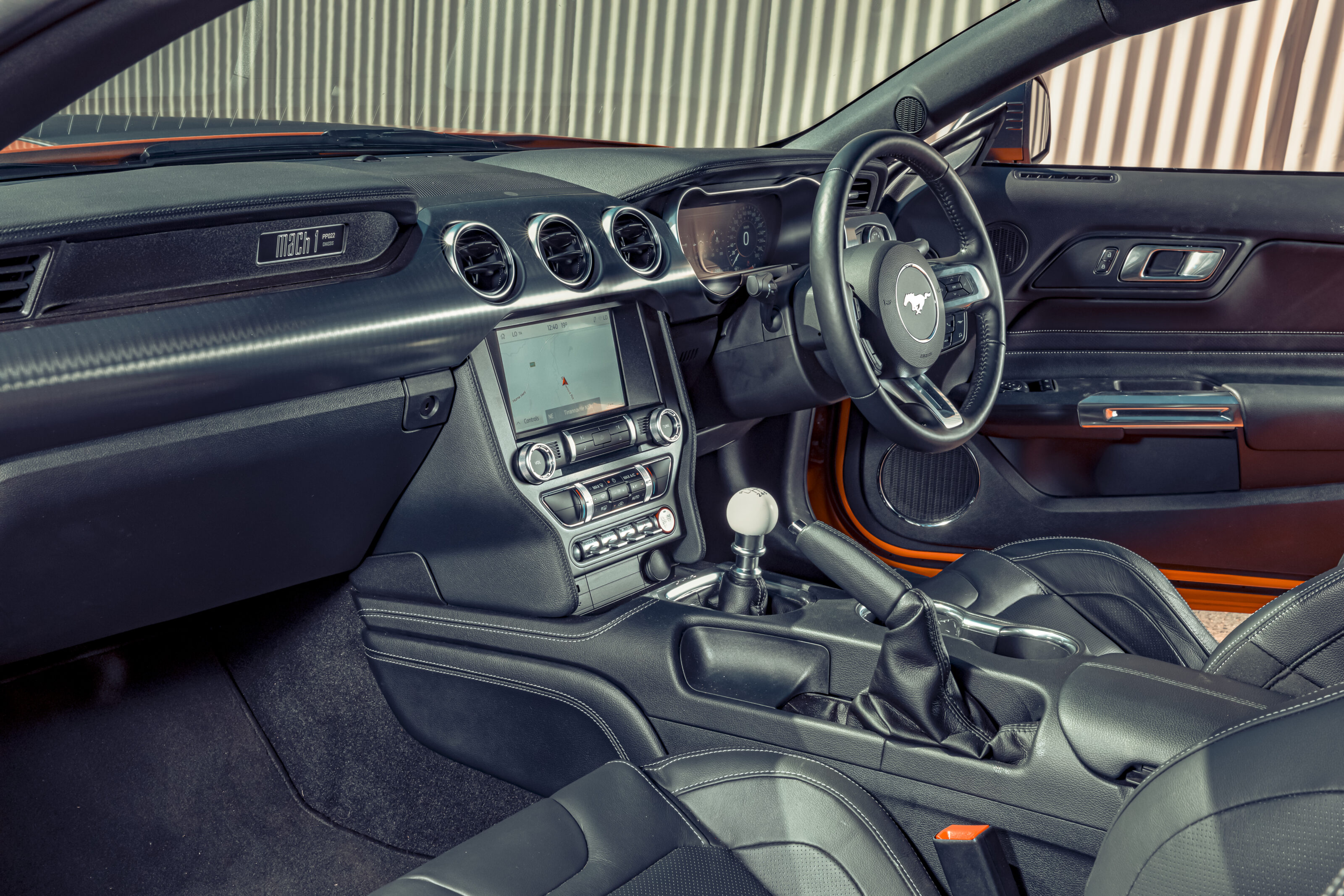
The 19-inch wheels are a half-inch wider at both ends, now 9.5-inches front and 10-inches rear, but wear the same tyres as the GT, Michelin Pilot Sport 4 S measuring 255/40 front and 275/40 rear.
Under the guards MagneRide adaptive dampers are fitted as standard (a $2750 option on the GT) with the latest calibration, there is a new calibration for the power steering, the brake booster from the US-only Mustang Performance Pack 2, stiffer anti-roll bars, front springs and bushes in the rear subframe, which also includes a toe-link from the Shelby GT500.
The biggest change, however, regards what’s hanging off the back of the engine. Buyers can opt for a 10-speed automatic, which has been upgraded with a new torque converter, revised calibration and second oil cooler, but our test car’s manual is a totally different gearbox.
In place of the GT’s Getrag is the Tremec TR-3160 from the Shelby GT350, which uses completely different ratios. How different? Well, the GT manual achieves the following speeds at 7500pm in each gear: 82-133-197-280-344-450km/h. The Mach 1 is as follows: 86-126-174-226-280-444km/h.
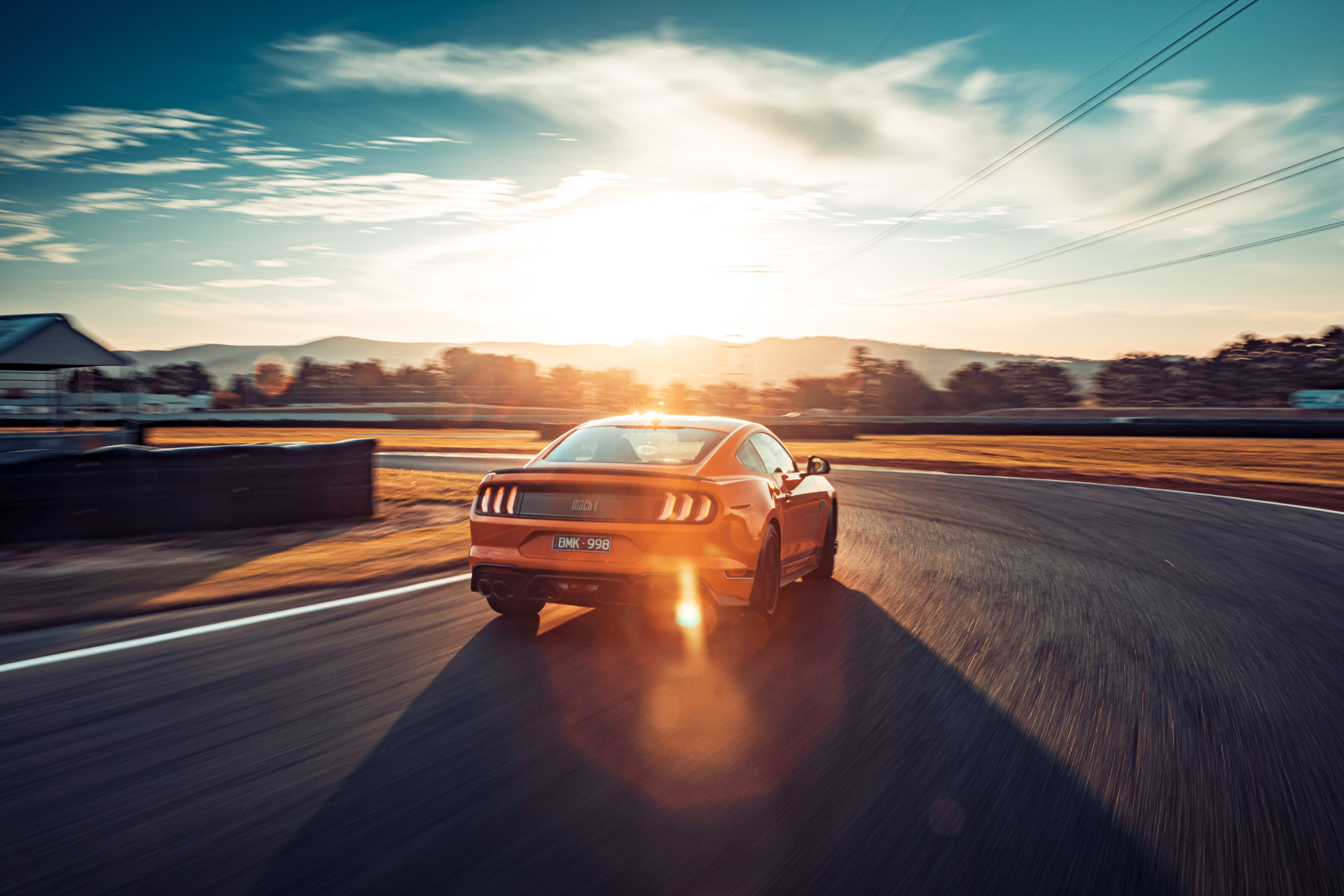
As you can see, the Mach 1’s intermediate ratios are much more tightly stacked bar the overdrive sixth; don’t expect any improvement in 0-100km/h sprint times, as first gear is actually taller than before, but on the move the new gearing bodes well for extracting more of the V8’s potential.
The news could have been even better, but Ford Australia prioritised economy over performance by selecting the 3.55:1 diff rather than the 3.73:1 Torsen unit fitted to US manual Mach 1s.
Nevertheless, as I roll out of the Wakefield Park pitlane – this engineering prototype is unable to be driven on public roads by non-Ford employees – two questions need answering: is this a more capable, more enjoyable Mustang, and can it complete a number of consecutive laps without stress?
The answer to both, happily, is yes. Engaging Track Mode sharpens the throttle, stiffens the MagneRide dampers and relaxes the stability control. The benefit of the dampers is immediately apparent when I initially forget to switch to Track Mode leaving the pits and the Mach 1 pitches and rolls through the first corner – it’s not just marketing fluff.

Thus primed the Mach 1 is relatively at home on track. It’s a big, heavy car; the Mach 1 is 5kg lighter than the GT but at 1779kg before driver it’s still a big lump and it feels it, especially at a track that’s as demanding on a chassis as Wakefield.
It requires smooth inputs so as not to overload the tyres; in the US an optional Handling Pack increases wheel width by a further inch each end, installs massive Michelin Pilot Sport Cup 2 tyres (305mm front; 315mm rear) and adds masses of downforce, but sadly the pack doesn’t pass ADRs.
If you really need it various aftermarket suppliers can fix you up, but even in standard guise the Mach 1 is impressive, it just needs a bit of patience. The front end bites harder than a standard GT and some deft trail-braking can adjust the rear.
But the biggest change is the gearbox. It doesn’t just increase enjoyment by giving the driver more to do or improve performance by giving the engine a shorter ratio to pull but it allows greater control over the Mach 1’s chassis.
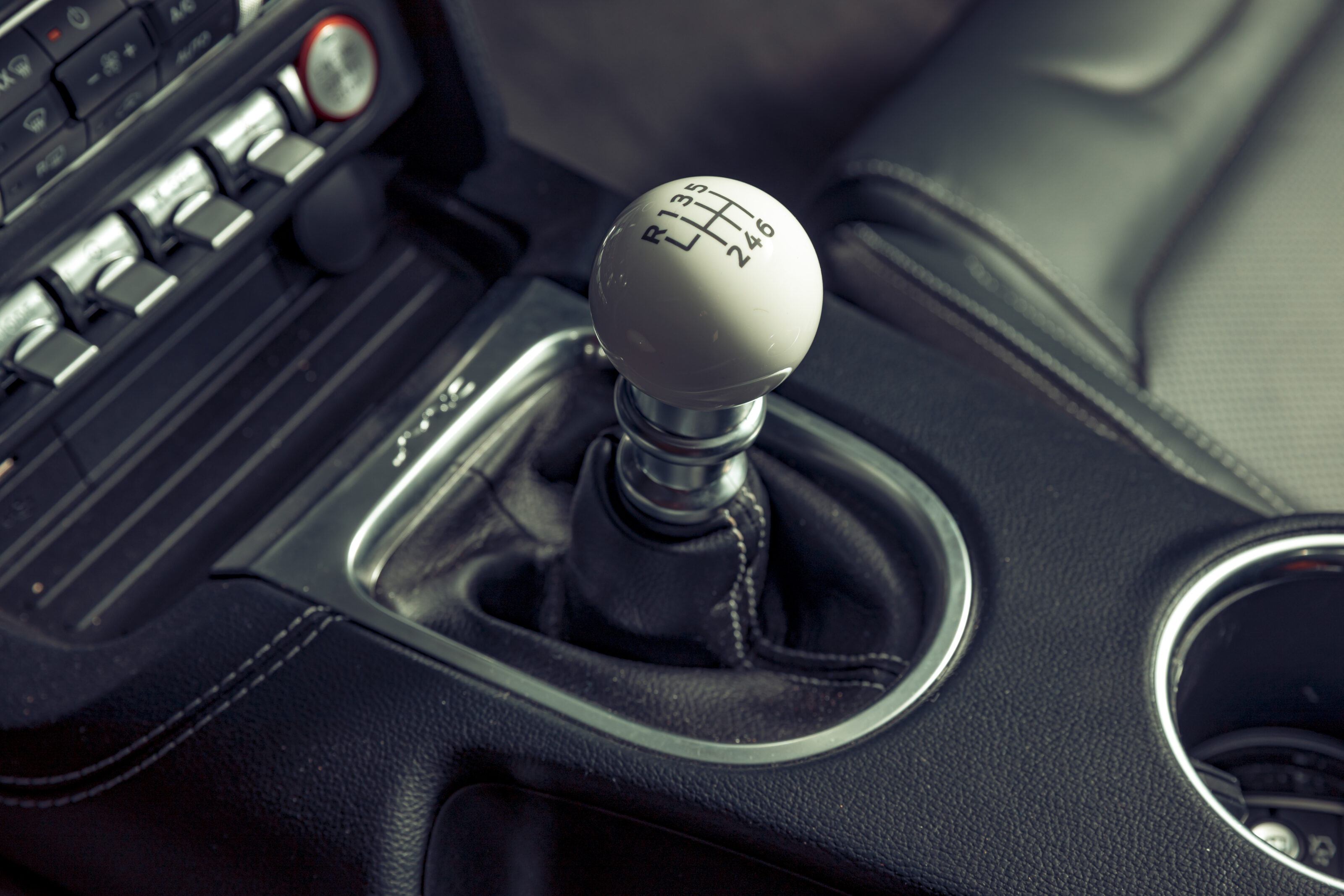
For example, through the tight turns one and eight I can use second for ultimate speed or, if the tyres are getting a little hot and loose, select third to calm the rear without sacrificing too much acceleration by falling down the rev range.
Through faster corners like those at three, four and nine a standard GT would be languishing in third gear, any attempt to throttle steer the car met with front end push, whereas the Mach 1 is up on its toes thanks to the ability to overspeed the rear tyres.
In layman’s terms, it’s much more fun, and with the ESP in its sports setting it’ll happily allow up to a half-turn of opposite lock before intervening, though in ultimate terms the car is faster and more enjoyable with all the electronics off.
What’s more, this fun now lasts longer than a couple of minutes with the Mach 1 displaying no apparent thermal degradation despite consecutive full-throttle laps. Over multiple sessions there isn’t one single drivetrain complaint and the brakes hold up incredibly well, too, the giant 380mm front discs and six-piston calipers proving their worth.

Is the Mach 1 worth a $20K premium over a standard Mustang GT manual? Tough one. I suspect that for those who have laid down money the fact that it’s a Mach 1 and not a standard GT is a fairly juicy carrot – that it also receives some impressive upgrades is icing on the cake.
As such, the fact that the Ford Performance catalogue could almost certainly provide the parts to upgrade a standard GT to a level of capability beyond the Mach 1 is almost a moot point, as it’s still ‘just’ a GT. A road verdict will have to wait, but if anything we’d expect the shorter gearing to be of even greater benefit there.
It’s a slight shame that the Mach 1 isn’t offered in its ultimate specification, losing adaptive cruise and using the taller diff ratio, but it still survives judgement day with its head held high and is a fitting continuation of the famous badge.
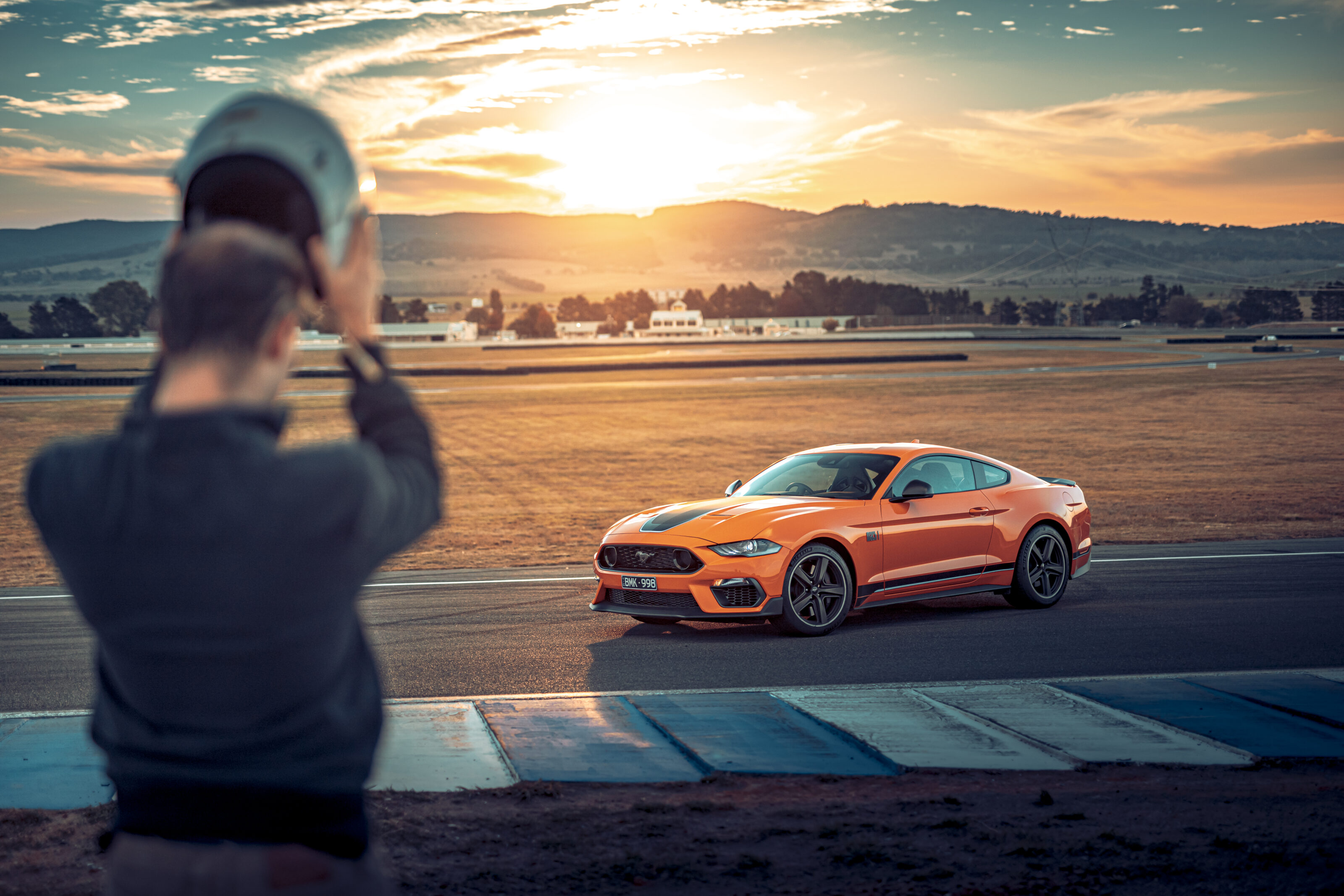
Specifications
Body: 2-door, 4-seat coupe Drive: rear-wheel Engine: 5038cc V8, DOHC, 32v Bore/stroke: 93 x 92.7mm Compression: 12.0:1 Power: 345kW @ 7500rpm Torque: 556Nm @ 4600rpm Weight: 1779kg Power/weight: 194kW/tonne Transmission: 6-speed manual Suspension: struts, coil springs, adaptive dampers, anti-roll bar (f); multi-links, coil springs, adaptive dampers, anti-roll bar (r) L/W/H: 4789/1916/1387mm Wheelbase: 2720mm Tracks: 1585/1654mm Steering: electrically assisted rack-and-pinion Brakes: 380mm ventilated discs, 6-piston calipers (f); 330mm ventilated discs, single-piston calipers (r) Wheels: 19 x 9.5-inch (f); 19 x 10.0-inch (r) Tyres: 255/40 R19 (f); 275/40 R19 (r) Michelin Pilot Sport 4 S Price: $83,365
Things we like
- worthwhile performance upgrades
- looks and sounds special
- works on track
Not so much
- no adaptive cruise
- taller diff
- tiny power bump


